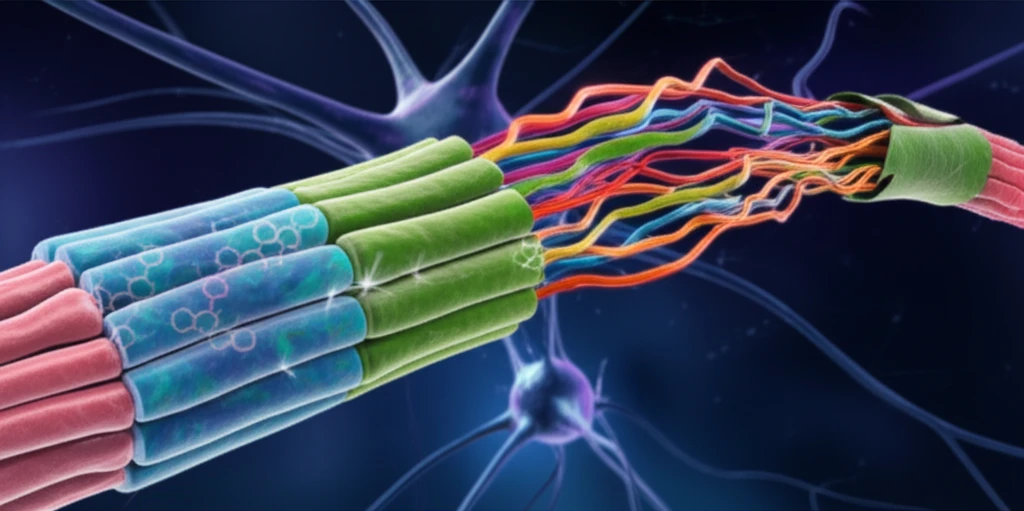
Myelin's Master Architect: How PMP22 Shapes Nerve Health
"Scientists uncover the crucial role of PMP22 in building and maintaining the protective insulation around our nerves, offering new hope for treating debilitating nerve disorders."
Imagine your nerves as electrical wires, each needing a coating to ensure signals travel swiftly and efficiently. This coating is myelin, a protective sheath that insulates nerve fibers and allows for rapid communication throughout your body. When myelin is damaged or doesn't form correctly, the consequences can be severe, leading to debilitating conditions like Charcot-Marie-Tooth disease (CMTD).
At the heart of myelin formation in the peripheral nervous system lies a protein called Peripheral Myelin Protein 22 (PMP22). While scientists have long known that PMP22 is essential for healthy myelin, its exact role in shaping the structure of myelin membranes has remained a mystery. Now, groundbreaking research is shedding light on how PMP22 acts as a key architect, directly influencing the organization of myelin.
A new study published in Science Advances reveals that PMP22 has an intrinsic ability to organize membranes, creating structures that mimic the intricate architecture of compact myelin. This discovery not only deepens our understanding of myelin formation but also opens new avenues for developing therapies to combat CMTD and other peripheral neuropathies. Let's explore how PMP22 shapes nerve health and what this means for the future of treatment.
PMP22: The Myelin Architect in Action

To understand PMP22's role, researchers conducted experiments where they introduced purified PMP22 into artificial lipid vesicles – tiny sacs made of fats similar to those found in cell membranes. What they observed was remarkable: PMP22 caused these vesicles to self-assemble into compressed, multi-layered structures resembling compact myelin. These "myelin-like assemblies" (MLAs) shared key organizational traits with the myelin found in healthy nerves.
- The Lipid-to-PMP22 Ratio: The amount of PMP22 relative to the lipids was crucial. Too much or too little PMP22 disrupted the formation of well-organized MLAs.
- Extracellular Loops of PMP22: These specific regions of the PMP22 protein, which extend outside the cell membrane, were essential for the assembly process.
- Specific Lipids: The type of lipids used in the vesicles also mattered. MLAs only formed with a particular combination of lipids, highlighting the specificity of PMP22's interactions.
A New Path to Treating Nerve Disorders
This research provides the first biochemical evidence that PMP22 directly contributes to membrane organization in compact myelin. By demonstrating PMP22's ability to self-assemble myelin-like structures, the study offers a new framework for understanding how myelin forms and how it is disrupted in diseases like CMTD.
The findings also suggest that MLA formation could be used as a screening tool to identify potential therapies for PMP22-related disorders. Researchers could test different drugs or molecules to see if they can restore proper MLA formation in the presence of PMP22 mutations.
While further research is needed to fully elucidate the complexities of PMP22's role in myelin, this study marks a significant step forward in our understanding of nerve health. By targeting PMP22 and its function, we may one day be able to develop effective treatments for CMTD and other debilitating peripheral neuropathies, offering hope for millions affected by these conditions.
